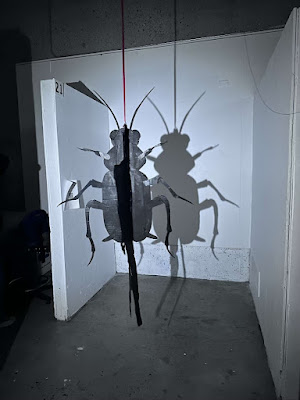Franz Kafka (1883-1924) was a German-speaking Jewish novelist and short story author based in Prague, Germany. Kafka is best known for his novels The Trail and The Metamorphosis.
Kafka’s works involve mixing the fantastical with the everyday, allowing pathological delusions to take hold in reality. He explores themes of alienation, existential anxiety, guilt, and absurdity. A shift from this state of normalcy to one of complete desolation is also common.
In his renowned novella The Metamorphosis (1915), Kafka tells a story of a man (named Gregor) who suddenly wakes up as a (human-sized) beetle. The book details how the man copes with the situation and (more so) how his family reacts to his transformation. At it’s core, The Metamorphosis explores the degradation and transformative power of alienation. Throughout the novella the dynamic between family members (particularity Gregor and his sister and father) is focused on through the lens of his families frustration, disgust, and lastly relief (due to Gregory’s seemingly inevitable death) regarding the giant beetle that they are now tasked with taking care of - a role that Gregor used to play for them. In summary, The Metamorphosis is an allegory for how a family reacts/copes with a loved one becoming a “useless” member of society.
For my projection project I was firstly inspired by the work of Christian Boltanski. As such, I decided to use the most basic form of projection for my assignment - just light and shadow. I decided to depict Gregor’s transformation in Kafka’s The Metamorphosis because of my own interest in the novel as well and because of my current interest (what I am also exploring in senior studio) of human-animal relationships in art.
My first idea for how to depict Gregor’s transformation was to have two lights from different angles projection two shadows onto connecting walls - one shadow of the beetle and the other of the man. However, when constructing the shape to create these shadows I realized that the spinning motion that occurs because of how the piece hangs was more interesting. Because of this I decided to use just one light and naturally spin the work in front of it - involving the element of performance and through this bringing action to the act of transformation itself.

